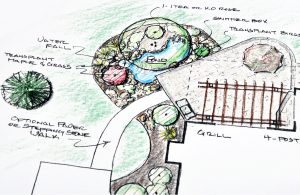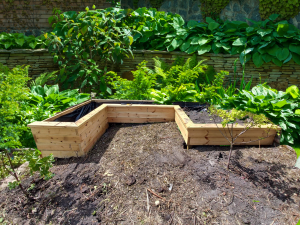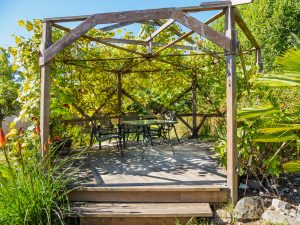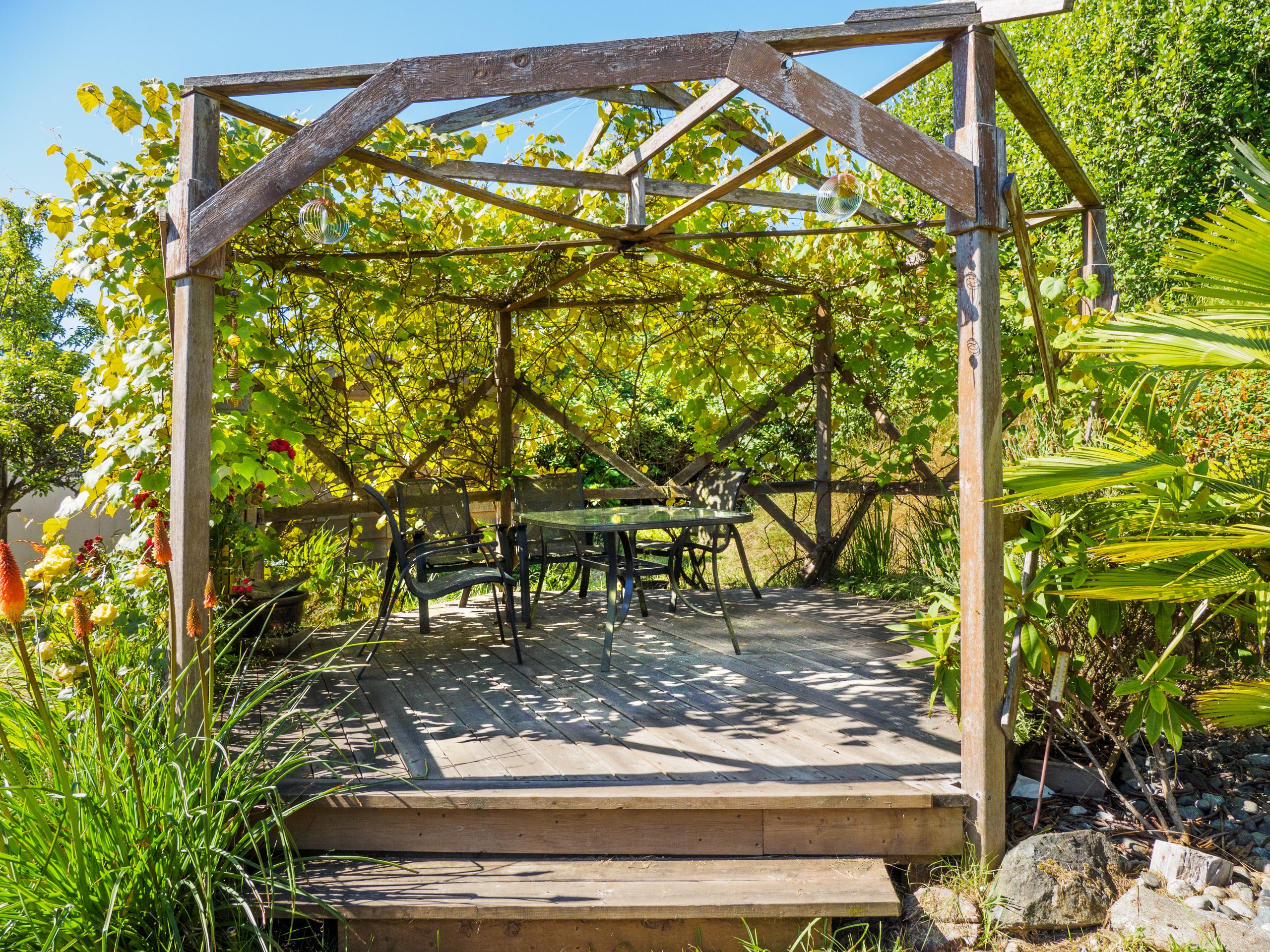Terraced Gardens: how to transform your terraced garden into somewhere you love to spend time
Terraced gardens can initially be intimidating and feel challenging. But terracing adds real interest to your garden and can make a sloping space very useable.
Our previous posts in our series on sloping gardens explored making the most of a garden on a gradient and planting schemes for sloping gardens. If you have opted to tackle your sloping garden by introducing terraces, this is the post for you. We’ll look at how to make your terraced garden somewhere you love to be.
So read on and learn how to make the most of your terraced garden with clever planting and zoning.
What is terracing in a garden?
By way of a reminder, or if you’re coming to this for the first time, let’s recap. Terracing is the process of creating level areas (terraces) from a slope. If you have ever visited a stately home with an impressive garden, there’s a good chance some of it will have been terraced, with steps between the different levels.
Terracing is something you can create at home, with a whole range of materials, many of which are sustainable. Check out our blog Sloping gardens: how to make the most of a garden on a gradient without it costing the earth for more inspiration.
So, the question you’re likely to be asking is, “where do I start with my terraced garden?”. Our tips will walk you through key things to think about.
Get your thinking cap on!
It’s tempting to just get stuck in and start planting. But we strongly advise you to start by taking a deep breath…..and thinking. Take a step back and think about where you want to end up.
Step into your garden (or look out of the window if you prefer!). Take a long, hard look at the space and consider what you’d like to include in your garden.
 For instance, if you have children, you may dedicate space to garden toys. Are you planning to grow your own vegetables and fruit? If you are creating a seating area, where in the garden will catch the sun at the right time of day? Is a pond area part of the plan?
For instance, if you have children, you may dedicate space to garden toys. Are you planning to grow your own vegetables and fruit? If you are creating a seating area, where in the garden will catch the sun at the right time of day? Is a pond area part of the plan?
Take time to move around the garden, thinking about the space from different areas and angles – and at different times of the day.
Grab a piece of paper and scribble down everything that comes to mind. Aims, elements, thoughts and feelings.
From there you can start to build a plan and get into the detail. If you need professional advice and extra inspiration help, call in a garden designer or gardening firm to help you work out and achieve your vision. Our team are always happy to help.
Create different zones and areas
One of the best things about a terraced garden is that it naturally falls into different zones and areas. As recommended above, start by thinking about the areas you want to create.
Once you’ve decided what to include, start thinking about how big you’d like each area to be. And, importantly, where to put each zone.
Here we’d advise keeping practical considerations and usability at the forefront. A seating or eating area at the top or far end of the garden may feel like a good idea, but if you like to regularly eat outdoors, think about the practicalities of carrying plates and glasses up and down steps.
Raised beds will help feed your family
 Raised beds work brilliantly in terraced gardens as you have an almost ready-made space for them. The beauty of raised beds is a dedicated growing area which will keep you in your greens for months. Again, be practical and don’t overestimate how much gardening time you can realistically manage. Check out our previous post for a rundown of sustainable materials. Don’t forget to consider drainage, sunlight and watering in your raised bed planning.
Raised beds work brilliantly in terraced gardens as you have an almost ready-made space for them. The beauty of raised beds is a dedicated growing area which will keep you in your greens for months. Again, be practical and don’t overestimate how much gardening time you can realistically manage. Check out our previous post for a rundown of sustainable materials. Don’t forget to consider drainage, sunlight and watering in your raised bed planning.
Choose materials carefully – and go natural
It’s possible for a terraced garden to feel a little disjointed. To avoid this, we have two main considerations.
Firstly, think carefully about the materials you use for creating the terraces and steps. It may be tempting to use lots of different materials – as many as one type for each layer. Experience tells us that you’re best sticking to a maximum of three – including any sleepers for the raised beds.
Structurally sound materials are important for longevity, especially on steeper sloping gardens, so it is often advised to create blockwork walls clad in other materials.
Decking works well both for cladding retaining terrace walls and for steps and is less expensive than some alternatives. Decking can also be stained or painted to your taste. It does need annual maintenance, though.
Reclaimed materials can also work really well. This is partly because they are already weathered and so will sit much more naturally in the environment from the start and add to the established feel of your garden. We love reclaimed bricks and slabs.
Add shade and shelter
 A seating area is a must in any garden, especially a terraced one. Don’t make the mistake of putting all the hard work in but having nowhere to sit and enjoy it! Trellis and pergolas can be creatively and inexpensively used to define out a distinct seating area. You can then train clematis or other vigorous climbers around the area for both colour and shade. Think about stone or gravel underfoot in this area to aid drainage, too.
A seating area is a must in any garden, especially a terraced one. Don’t make the mistake of putting all the hard work in but having nowhere to sit and enjoy it! Trellis and pergolas can be creatively and inexpensively used to define out a distinct seating area. You can then train clematis or other vigorous climbers around the area for both colour and shade. Think about stone or gravel underfoot in this area to aid drainage, too.
Also, don’t forget that trees are a brilliant source of shade. They’ll also help with drainage and protect against erosion. Trees are, of course, a key factor in attracting birds into your garden.
Go forth and enjoy!
We hope this post about terraced gardens has inspired you to embrace your garden. There are no hard and fast rules. Start by working out where you want to get to, and step by step create a garden to suit your lifestyle. Let us know how you get on, and give us a call if you need help.
The world, or rather your garden, is your oyster!

